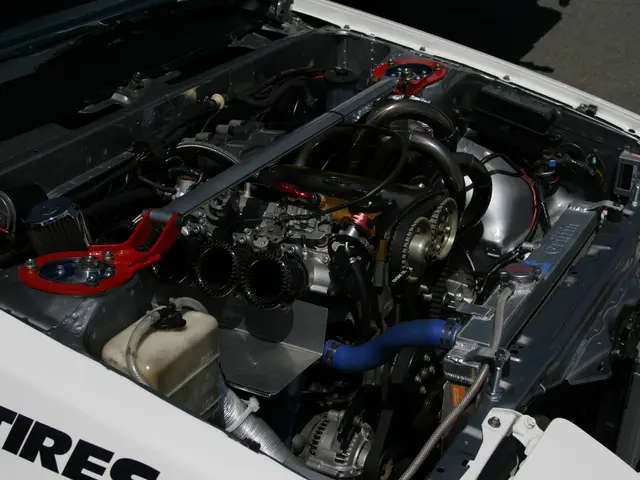Ukraine reconfigures agricultural planes into military assets
In an unconventional move, Ukraine is repurposing agricultural aircraft into missile-armed drone interceptors, a tactic aimed at countering Russian drone threats such as the Shahed kamikaze drones.
The Zlin Z-137 Agro Turbo crop duster, originally designed for agricultural duties, has been transformed into a platform equipped with R-73 short-range air-to-air missiles. This innovative approach allows the aircraft to operate in altitudes and profiles where drones frequently operate, improving its chances to detect and intercept them.
The R-73 missile, with a range of 20-40 km, is effective against small, low-speed, and highly maneuverable drone threats. The conversion of the Z-137 leverages existing civilian hardware, avoiding the need for scarce advanced fighter jets or air defense systems. This not only reduces costs but also reduces susceptibility to sophisticated electronic warfare and jamming typically aimed at more advanced fighters.
This project serves as a proof of concept, demonstrating Ukraine’s ability to adapt legacy aircraft and missile systems to create new layered defenses against aerial threats. The initiative showcases Ukraine’s resourcefulness and adaptability in asymmetric warfare under conditions of limited resources, complicating Russian operational planning by adding an unconventional aerial threat.
Ukraine's diversification of missile employment on different platforms—including fighters, improvised ground systems, naval drones, and now crop dusters—illustrates a flexible, multi-domain approach to air defense. This model may inspire other countries facing persistent drone threats and equipment shortages to pursue similar adaptive, low-cost air defense solutions.
In other news, the meeting between US President Donald Trump and Russian leader Vladimir Putin is taking place to discuss a peace solution for Ukraine. However, George Barros from the Institute for the Study of War is pessimistic about the meeting, stating that Putin has not shown any willingness to compromise on his war aims.
Meanwhile, in Ukraine, people express skepticism and concern about the planned meeting between Trump and Putin. The location of the meeting in Alaska is sensitive due to its proximity to Russia, and protests are planned ahead of the meeting.
On the battlefield, the Ukrainian army denies reports of a Russian breakthrough on the frontline near the cities of Pokrovsk and Dobropillia in the Donetsk region. The 1st Asov Corps of the National Guard reports taking over defense positions in Pokrovsk to halt advancing Russian forces.
In addition, Ukraine reports the liberation of two villages in the border region of Sumy. However, at least twelve foreign volunteers were killed in a Russian attack on a Ukrainian military training camp.
As the conflict continues, Europe has provided more military aid to Ukraine through the arms industry than the USA since the start of the Russian invasion. Lithuania plans to open three drone training centers for the general public and schoolchildren, further strengthening Ukraine's defense capabilities.
In the geopolitical arena, Hungary's government refuses to sign a joint statement by the other 26 EU countries welcoming US President Donald Trump's efforts to end the Russian invasion of Ukraine. This reflects growing divisions within the EU over how to respond to the crisis.
Finally, Russia and Belarus plan a joint military maneuver from September 12 to 16, a move that could escalate tensions in the region. The German government aims to boost the country's resilience against crises, recognizing the need for increased defense spending in the face of growing threats.
- The innovative conversion of agricultural aircraft in Ukraine's community policy, such as the Zlin Z-137 Agro Turbo, into missile-armed drone interceptors underscores the need for flexible employment policies in political and general news situations, particularly during war-and-conflicts.
- As Europe strengthens Ukraine's defense capabilities, with nations like Lithuania opening drone training centers for the general public and schoolchildren, there is an increased focus on employment policies that cater to equipping citizens with essential skills for air defense, countering drone threats and reinforcing resilience against crises.







